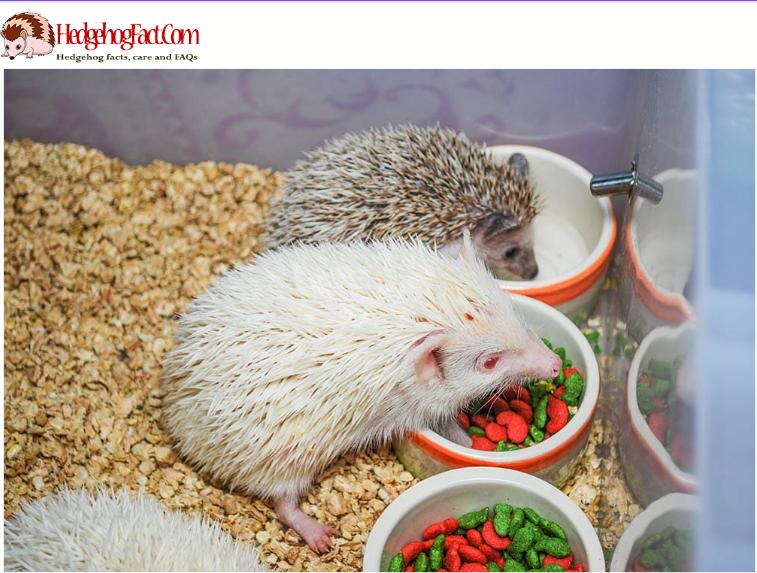Hedgehogs are becoming increasingly popular as pets due to their unique appearance and charming personalities. If you are planning on adopting a hedgehog, it’s important to provide them with a comfortable and safe living environment. A hedgehog cage setup is the first step in ensuring that your pet hedgehog is happy and healthy. In this article, How To Setup Hedgehog Cage, we will explore the necessary items and steps for setting up a hedgehog cage.
Why a Proper Hedgehog Cage Setup is Essential
A hedgehog cage setup is essential for the well-being of your pet hedgehog. Hedgehogs are active animals that require enough space to move around, play, and explore. A suitable hedgehog cage also provides a safe and secure environment for your pet. By ensuring that your hedgehog has everything they need in its cage, you can keep them healthy and happy.

Here are some reasons why a proper hedgehog cage setup is essential:
Space: Hedgehogs need enough space to move around, explore, and exercise. A cramped or cluttered cage can lead to stress, obesity, and other health problems.
Temperature: Hedgehogs are sensitive to temperature and need to be kept in a warm environment. If the temperature drops below 72 degrees Fahrenheit, hedgehogs can go into hibernation, which can be fatal.
Ventilation: A hedgehog’s cage should be well-ventilated to prevent the buildup of ammonia and other harmful substances from urine and feces. Poor ventilation can also lead to respiratory problems.
Hygiene: Hedgehogs are prone to skin infections and other health issues if their cage is not kept clean and hygienic. Regular cleaning of the cage and accessories is essential to prevent the buildup of bacteria and other harmful substances.
Enrichment: Hedgehogs are intelligent and curious creatures that need mental stimulation to prevent boredom and depression. A proper cage setup should include toys, hiding spots, and other forms of enrichment to keep your hedgehog happy and healthy.
Choosing the Right Hedgehog Cage
When it comes to hedgehog cages, there are many options available on the market. However, not all cages are suitable for hedgehogs. A good hedgehog cage should be spacious, well-ventilated, and easy to clean. It should also be escape-proof to ensure that your hedgehog stays safe and secure.

The most common types of hedgehog cages are wire cages, plastic containers, and custom-built enclosures. Each type of cage has its pros and cons, and the best option for you depends on your specific needs and preferences. For instance, wire cages are great for ventilation, but you need to make sure that the spacing between wires is small enough to prevent your hedgehog from getting stuck or escaping.
Setting Up the Hedgehog Cage
Once you have chosen a suitable hedgehog cage, it’s time to set it up. The first step is to position the cage correctly. The placement of the cage can have an impact on the health of your hedgehog, so it’s essential to choose a location that provides the right temperature and humidity. Ideally, your hedgehog should be housed in an environment where the temperature ranges from 74°F – 78°F.
Next, you should add bedding to the cage. A good bedding material for hedgehogs is a combination of fleece liners and paper bedding. This provides a soft and cozy surface for your hedgehog to sleep and play on. You should also provide your hedgehog with a hideout, which can be a simple cardboard box or a more elaborate hideout made specifically for hedgehogs.
Essential Items for a Hedgehog Cage Setup
If you’re considering getting a hedgehog, you’ll want to make sure you have the right setup to keep them healthy and happy. Here are some essential items you’ll need for a hedgehog cage setup:
Cage: You’ll need a cage that’s big enough for your hedgehog to move around and explore. A good size for a hedgehog cage is at least 24 inches long, 18 inches wide, and 24 inches tall.
Bedding: Your hedgehog will need some soft, absorbent bedding to burrow in and stay warm. Avoid using cedar or pine shavings, as they can be harmful to hedgehogs. Paper-based bedding or fleece liners are good options.

Hideout: Hedgehogs like to have a place to hide and feel secure. A small hut or igloo-shaped house is a good option.
Wheel: Hedgehogs are active creatures and need plenty of exercises. A solid surface wheel with a diameter of at least 12 inches is a good choice.
Food and water dishes: You’ll need separate dishes for food and water. Ceramic or glass dishes are good options, as they’re easy to clean and won’t tip over easily.
Food: Hedgehogs are insectivores, so they need a diet that’s high in protein. Commercial hedgehog food or high-quality cat food is a good option. You can also offer mealworms, crickets, or other insects as a treat.
Heat source: Hedgehogs are sensitive to temperature and need to be kept warm. A heat lamp or ceramic heat emitter can be used to provide a warm spot in the cage.
Thermometer: It’s important to monitor the temperature in your hedgehog’s cage. A thermometer can help you ensure that the temperature stays in the ideal range of 72-80 degrees Fahrenheit.
Cleaning supplies: You’ll need to clean your hedgehog’s cage regularly to keep it hygienic. Vinegar and water or a pet-safe disinfectant can be used to clean the cage and accessories.
Toys and enrichment: Hedgehogs are curious creatures and need plenty of mental stimulation. Offer toys like tunnels, balls, and puzzles to keep them entertained.
Conclusion
In summary, a proper hedgehog cage setup is essential for your pet’s health, happiness, and overall well-being. By providing a safe, comfortable, and stimulating environment, you can ensure that your hedgehog will live a long, healthy, and happy life.





